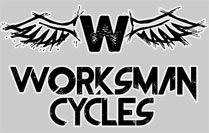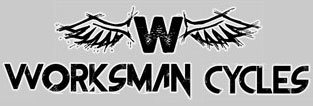Future of Biking in NYC
How to Select the Best Delivery Bike for your Business
 “What is the best bike for delivery?” is a question we answer many times every day hear at Worksman Cycles . Our answer is always the same: “It depends.” So if you are asking that question, here is what it all depends on.
“What is the best bike for delivery?” is a question we answer many times every day hear at Worksman Cycles . Our answer is always the same: “It depends.” So if you are asking that question, here is what it all depends on.
- What does your business deliver?
The most common answer is, of course, food. But we need to dig a bit deeper:
- Hot food, cold food or both? If hot, does it leave your physical location in a hot bag? If cold, do you need a cooler? Look for a bike that offers a choice of baskets and/or cabinets. Cabinets can be insulated or can accommodate an insulated bag.
- How fragile is your product? A bag of fries or container of noodles can easily survive some jostling in transit. Not so for pizza or sushi. If your product is fragile, or needs to remain in one position, look for a bike with a frame mounted cabinet or basket that stays straight and level when turning or parked. A traditional handlebar mounted basket will dip and turn with every movement of the handlebar and will “flop” to one side when parked. And speaking of handlebars, using them as a “bag hanger” is never a good idea for the product or the rider.
- If you are delivering goods other than food, then load carrying becomes key in selecting the proper vehicle. It is critically important to remember that loads become “dynamic weight” in transit and shifting weight and center of gravity can become a disaster on a cycle not designed to handle heavy and bulky loads. Also, most recreational bikes, even robust mountain bikes, are not designed to carry over 250 lbs. So if you have a 175 pound rider, that allows for just 75 lbs of cargo.
- How many separate deliveries do you make on each trip?
If you make multiple deliveries on each trip, you need to consider two things:
- Locking your cargo: A cabinet can easily be locked. Separate bags cannot.
- Weight capacity: If you do send out multiple orders, or you often make large deliveries e.g. catering, look for a frame mounted cargo basket or cabinet which can handle heavy weights without sacrificing product quality and rider safety.
3. How many deliveries do you make per day or anticipate making per day?
If your business is making many deliveries per day, or you are anticipate that delivery will be a major profit center, then it is critical to look for a bicycle designed for commercial use. Industrial-grade cycles have features not found on recreational-grade bikes. Sturdy steel frames, heavy duty rims and spokes, simple components such as coaster brakes and internally-geared hubs, heavy-duty sprockets, chains and cranks. Your delivery bike(s) need to be up and running every day. Nothing will kill off your delivery business quicker than having to turn away orders because you can’t deliver. So that recycled 21 speed mountain bike is best left in the garage. Look for a bike designed from the ground-up for commercial applications.
4. Do you really need a bike? Or do you actually need a trike?
If you are consistently delivering large or heavy orders, have you considered a tricycle instead of a bike.
- Trikes can handle far greater payloads and do offer much better stability for safe handling of large loads. Trikes are available in rear or front load configurations. Some even offer leaf-spring mounted platforms and cabinets (much like the cargo bed of a pick-up truck) that can handle payloads up to 500lbs.
- If you are considering a cargo tricycle you will need to heed the same caveats as when choosing a cargo bike: look for models that have been designed for commercial application. Just like bikes, there are many recreational grade trikes that will simply not hold up to the demands of business use.
5. Choose your delivery vehicle in the same way you choose other equipment for your business.
You wouldn’t equipment designed for a home kitchen for your restaurant or use tools designed for the D-I-Y market for your shop. If your livelihood depends on your equipment you’d be wise to invest in the finest commercial grade products you can afford. Same goes for delivery cycles. If you visit the local flea market, big box store, or even your local bike shop, you will most likely be sorely disappointed when your delivery business grinds to a halt due to broken chains, dented rims and frozen derailleurs. The savings you realized on the purchase were quickly offset in lost delivery income. If you choose wisely, great industrial-grade bicycles start at under $400 while good tricycles are available as low as $750.
6. What about European-style Cargo Bikes?
European or “Dutch” style cargo bikes have seen a rapid rise in popularity in the United States because of their ability to handle large and bulky loads such as groceries and kids. We love these for personal use, much less so for commercial use. These bikes feature very impressive engineering as well as very sophisticated componentry. 21-speed derailleurs, disc or hydraulic brakes and long and complicated steering mechanisms make them delightful to use for the proud family on their Saturday morning errands run but will prove to be quite devilish for the business owner. Complicated/sophisticated usually means “requires careful maintenance” while low volume imports beg the question “where are we going to get parts for it?”
If you wish to join the legions of people who turn to a bike instead of a car and need/wish to carry large loads, we heartily endorse Cargo Bikes. If you wish to operate a profitable delivery business, you will be far better off with a commercial-grade bike or trike.







